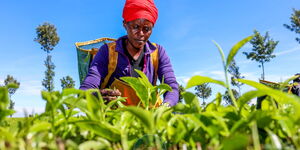Kenya is an agricultural nation with most of its citizens depending on farming as their main economic activity.
According to International Fund for Agricultural Development (IFAD), the agriculture sector remains the backbone of the Kenyan economy, employing 80 per cent of the rural population and accounting for about 65 per cent of exports.
Being the main income-generating activity, obtaining high yields is important for farmers.
Kenyans.co.ke compiled 5 common mistakes farmers make that reduce yields;
Poor soil management/testing
Many Kenyan farmers do not take the time to conduct soil tests on their farms.
This results in them growing crops that are not suitable for that type of soil.
Good soil management will let you know which crops you can grow and how much fertilizer and subsequent extension services are needed.
According to Agrocare with a proper soil fertility management strategy, farmers can maximize the efficiency of nutrients and water use and improve their agricultural productivity.
Poor quality seeds
Poor-quality seeds are the first recipe for poor yields.
One disadvantage of poor-quality seeds is that some will not germinate at all. The seeds that germinate usually exhibit stunted growth and are prone to pests and diseases.
According to Food and Agriculture Organisation, hybrid seeds are recommended for farmers since they grow faster, have higher yields, and are more disease resistant.
Poor water management
Plants do not only need water but require it in a consistent manner.
If you are inconsistent or are improperly watering your crop in a manner that may lead to crops not receiving enough water, your crop health will decrease or die.
When irrigating, you should also avoid excess watering as that will lead to the lodging of crops hence reducing yields.
Clustering of crops
Some farmers plant too many seeds in a small space of land in hope of getting a high yield.
What happens is that the crops cluster in one area denying each other space to breathe and access sunlight.
Spacing crops is also crucial according to agricultural expert Anna Burke.
“Spacing your plants appropriately reduces the risk of disease in two ways: contagion and improved immune system.
“It is easy for disease to spread from one plant to another if the plants are growing on top of one another, so plants growing too closely together are not as healthy as plants with enough space,” she writes in Dave’s Garden agricultural journal.
Non-maintenance culture
Planting is just the first step toward farming. Crops need utmost care from planting to harvest time.
Weeds and alien plants compete with crops for space, water, and soil nutrients. Failure to tackle such issues in the early days will lead to the weeds overgrowing and eventually covering your crops.












